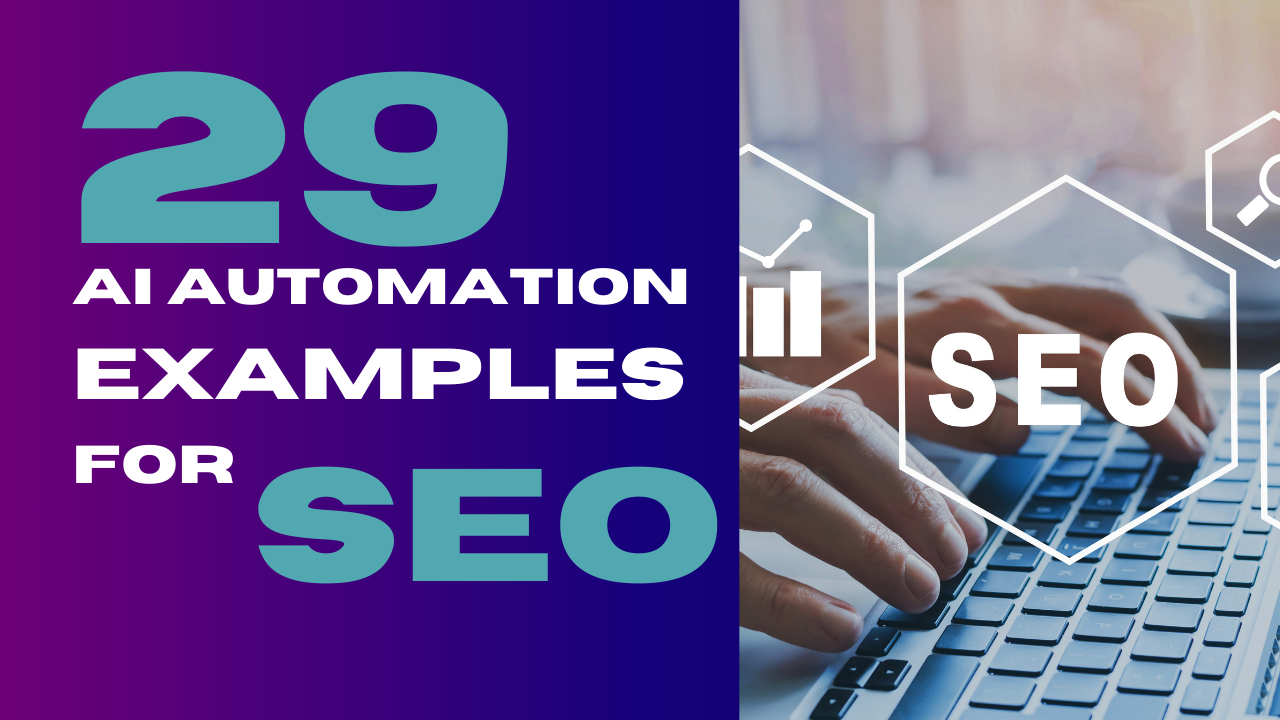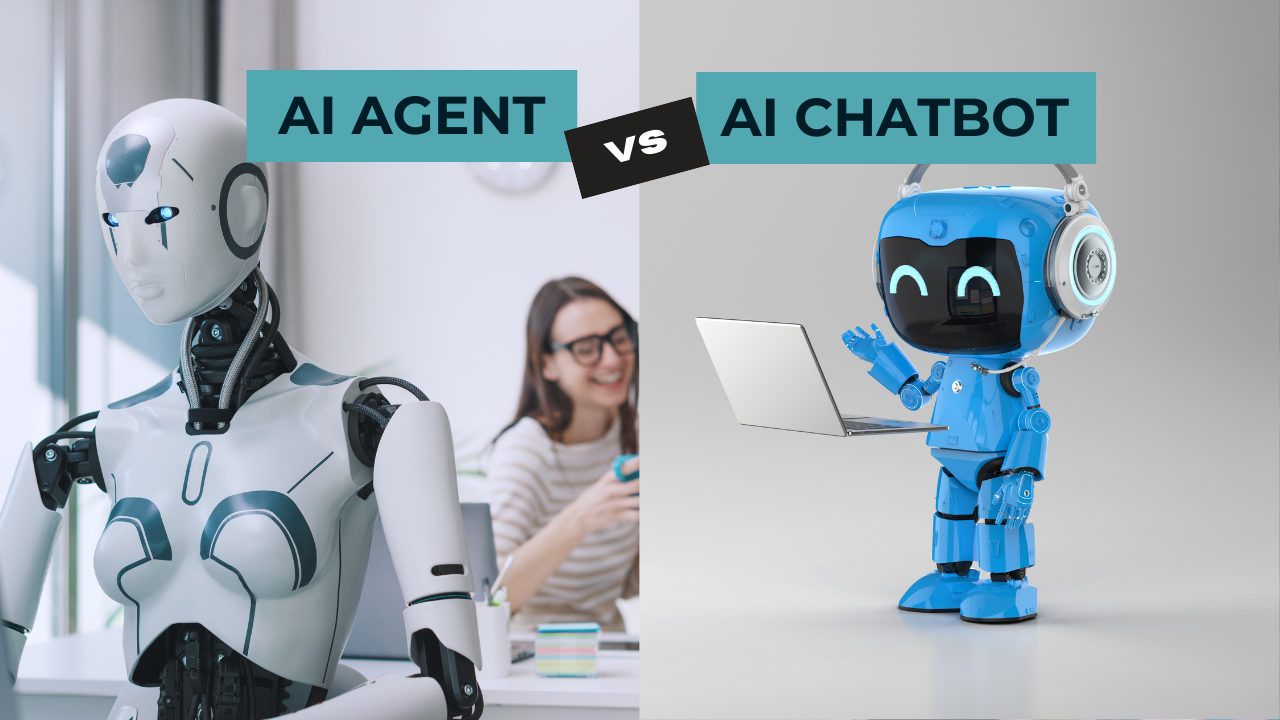Artificial Intelligence (AI) is deeply integrated into the business processes and can take independent decisions based on the users needs. This might sound like it’s been written in a futuristic novel but it’s already reality today.
We are living in a time where AI can be integrated into any kind of automation and take over creative tasks, replacing the need of human intervention. It’s transforming the way we work in many industries, streamlining operations and creating new opportunities for innovation. AI is reshaping how we and our businesses operate.
However, leveraging AI Automation successfully requires more than just blindly implenting it everywhere. It needs a strategic approach, ethical considerations, critical thinking, and a commitment for continuous improvement.
In this article, we’ll explore some of the best practices for AI Automation, providing actionable examples that will help you integrate this technology benefitially.
Table of Contents
Toggle1. Define clear objectives and use cases
The first thing, before blindly integrating AI Automation into your business is to a clear objection and the usecase you want to automate.
AI is not a one-size-fits all solution and therefore it important to identify the the WHY and the WHAT.
Why do you want to integrate AI Automation and what exactly do you want to automate?
Why are clear objectives important for AI Automation?
Without a clear purpose, the integration of AI becomes directionless pretty fast. First benefits will show almost immediately and possible further improvements will lead to change of direction. This results in wasted resources and flaws in the process.
Defining objectives and use cases helps you focus on solving real problems and delivering measurable results.
Best Practices
- Identify pain points: Make a list of current pain points in your business. Focus on areas where AI or Automation can have a significant impact. For example: reducing operational cost, improving customer service, or improve your content creation speed.
- Set SMART Goals: Ensure your objectives are Specific, Measurable, Achievable, Relevant, and Time-bound. For instance, “Reduce customer response times by 30% within six months using AI chatbots on my website.”
- Prioritize (real) Use Cases: Try to find a high-impact but low-complexity use case for initial projects. And make sure that you pick a real use case. This allows you to get some quick wins and also gain some experience for further projects.
- Be flexible in adjusting your workflow. Although you should pick a workflow that actually exists in your company, stay open to improve it and try things out.
Example
A b2b agency might use an AI Agent to optimize customer support by answering questions about products or services and helping to qualify possible leads.
2. Prioritize Data Quality and Governance
AI systems are only as good as the data they’re being trained on. Low-quality and incomplete data can lead to inaccurate or biased outcome.
Why is Data Quality important for AI Automation?
“Eat healthy and you will be healthy. Eat poorly and you will get sick”. The same goes with training an AI model. High quality data is important to ensure the AI’s output quality. This ensures that your AI Automation will generate meaningful and reliable results.
Best Practices for ensuring data quality and governance
- Keep your data clean: Remove duplicates, correct errors, and fill in missing values to ensure your data is clean and consistent. Don’t just “assume” knowledge that might be obvious for you and keep your training data as complete as possible.
- Ensure Data Relevance: Use data that is directly related to the problem you’re trying to solve. For example, if you’re building an AI Lead Qualification Automation, ensure your data includes diverse customer profiles for efficient filtering.
- Establish Data Governance: Keep any kind of policies and regulations in mind that are relevant to your business, country, and industry. Especially, when it comes to managing data access, security, and compliance. Industries like healthcare and finance are a good example for such highly regulated industries.
- Make sure you are allowed to use the data: Alongside data governance you should also make sure that you don’t break any HIPAA (US) or GDPR (EU) rules. You shouldn’t save nor train your AI model with any kind of personal information to be on the save side.
Example
A healthcare provider might use AI to indicate their patients symptoms and predict possible outcomes. By ensuring data quality and governance, they can avoid biased predictions and ensure compliance with privacy regulations like HIPAA.
If you want to learn more about data quality in AI-driven solutions, you can check out accelldata’s blogpost about data quality management.
3. Choose the right tools and technologies
The AI Automation landscape is already huge, with a wide range of tools and technologies available. Choosing the right ones is critical to the success of your AI Automation integration.
Why is the right toolset important for AI Automation?
At first glance, a lot of tools might do the same and therefore any of it can be used. For example AI LLMs like ChatGPT, Claude or DeepSeek. All three of them are chat-based AI interfaces that can generate results for you.
But, depending on the model/version of the Large Language Model (LLM), they are very different from one another when it comes to training effort, operational cost, output quality, reasoning, and performance. (just to name a few. there are more differences).
Of course, this is only an example for AI LLMs. For a complete AI Automation initiative there are even more tools needed for workflow management, data storage, infrastructure, etc.
Best Practices
- Evaluate Your Needs: Consider factors like scalability, ease of integration, and cost when selecting AI tools. For example, if you’re a small business, you might choose a cloud-based AI platform that offers pay-as-you-go pricing instead of a fully fledgded and individualized AI solution.
- Leverage Open-Source Frameworks: You don’t always need the latest and trendy tools to make AI Automation work for you. AI Training tools like TensorFlow and PyTorch are widely used and supported by active communities and allow you to build & train your own AI models. N8n is perfect for your automation needs if you have some technical expertise.
- Partner with Experts: If you lack in-house expertise, consider partnering with AI vendors or consultants who can guide you through the implementation process and give you some external industry insights.
Example
A data-driven trading company might use traditional automation to import market relevant data, while leveraging AI for predictive market analysis.
4. Focus on Ethical AI and Bias Mitigation
AI Automation will transform industries and change our future way of working, but it also raises ethical concerns. Bias, privacy, and transparency are critical issues that must be considered to ensure a responsible use of AI.
Why are ethics important for AI Automation?
AI is only benefitial if you leverage it to support you and your business. Wrong use of AI can lead to biased outcomes and, in the worst case, damage your brand’s reputation.
Best Practices
- Identify and Mitigate Bias: Use diverse datasets and regularly audit your models to detect and address biases. For example, if you’re building a hiring tool, ensure it doesn’t favor certain demographics over others.
- Ensure Transparency: Make your AI systems explainable so you and your stakeholders can understand how the decision-making process is set up. This kind of “workflow transparency” is crucial to build trust in your application.
Example
A hiring agency might use AI to assess possible candidates. By focussing on transparency and fairness, they can ensure traceability, avoid discriminatory practices, and build trust with customers and applicants.
5. Invest in Employee Training and Change Management
AI is here to stay. And whether you like it or not, AI Automation will change the way we work. But against the common fear of this technology, AI will not replace (all) humans. Instead, it will be deeply integrated into our workflows and actively support us with our daily tasks.
Therefore, employees need to have the skills and the knowledge to support their work effectively with AI tools.
Why is employee training so important?
If there’s a benefitial use of AI in your industry, you can be sure that your competitors will leverage it sooner or later. Resistance to change and lack of expertise will hinder the adoption of AI Automation and leave you behind your competitors. Therefore it’s crucial to stay ahead of the curve and invest in training and change management to adapt and future-proof your business.
Best Practices
- Upskilling yourself and your employees: Provide training programs to raise your employees AI awareness and skills, such as data analysis and prompt engineering. Make “using AI at work” a new standard.
- Foster a Culture of Innovation: Encourage employees to experiment with AI tools and share their insights. This will drive creativity and collaboration.
- Communicate Clearly: Keep employees informed about AI initiatives, take their feedback and ideas into account, address their concerns, and highlight the benefits of AI Automation.
Example
An online retail store might train it’s staff to leverage AI-powered Agents for customer support inquiries, reducing the need of human customer interaction, increasing the amount of solved issues and resulting in a higher customer satisfaction and a higher conversion rate.
6. Start Small and Scale Gradually
AI Automation can get complex and ressource heavy pretty fast. If you are at the beginning of your AI Automation journey, make sure to start with a small, manageable project that allows you to get hands-on experience and build confidence. Aim for quick wins and increase the complexity afterwards.
Why starting small is crucial for your success in AI Automation
“You don’t know what you don’t know” – Some challenges and opportunites are invisible to you before you actually start.
Small pilot projects can provide valuable insights and help you to identify these challenges and opportunities early on.
Best Practices
- Choose Low-Risk Projects: Start with small projects that have a high likelihood of success and minimal impact on critical operations. Data entry or a suggestion system are a good example for this.
- Measure Success: Define some key performance indicators (KPIs) beforehand to evaluate your implementations success by tracking changes and comparing actual improvements. For example the average support ticket turnover rate.
- Iterate and Improve: Implement -> analyse -> iterate -> improve. Use feedback from pilot projects to refine your models and automations before scaling up.
Example
A social media agency might start by automating its email marketing campaigns using AI, tracking and analysing crucial KPIs like open rate and conversion rate, reiterating, and improving the automation.
7. Monitor, Maintain, and Optimize
As mentioned in the point before: Continuously adjusting your AI Automation is crucial for adaptation. AI models and automations are not static – they require ongoing monitoring, maintenance, and adjustment to ensure they continue benefitting your business.
Why is continuous improvement important for AI Automation?
Over time, data patterns can change, requirements and goals can shift, and possible quality improvements can show, leading your AI Automation to lack performance. Regular monitoring and optimization will keep your systems effective.
Best Practices
- Monitor Performance: Keep track of your KPIs over time. If possible, use tools and dashboards to track the performance of your AI models in real-time.
- Stay open-minded: Cricitally question your systems performance and compare it to industry standards whenever possible. Share your experience with others and be open for honest feedback about the workflows.
- Address Model Drift: Humans learn new things every day. The same should apply to your AI systems. Regularly retrain your models with new training data to ensure they remain accurate and relevant for your business. For example: An e-commerce store might add new products to their store and can train their AI systems with additional product knowledge.
- Optimize Processes: Continuously look for ways to improve your AI systems, such as by incorporating new features or algorithms. But remember to set up KPIs…
Example
An e-commerce store might monitor it’s AI product suggestion agent to ensure it continues to deliver relevant product suggestions as the product pool as well as the customers preferences change.
8. Ensure Security and Compliance
Like your infrastructure, emails, or website, AI systems can also be another vulnerability in your business. It can be targetted in cyber attacks, data breaches or break compliance laws if not integrated correctly.
Why is security and compliance important?
A security breach in your AI system can have severe consequences for your businesses, ranging from financial loss and reputational damage to compliance issues and legal penalties. Ensuring a secure integration of AI into your business is therefore crucial to minimize these risks.
Best Practices
- Implement Robust Security Measures: As for every other IT system, using encryption, access controls, and other security measures should be one of your highest priorities.
- Comply with Regulations: Depending on your location, you might have different regulations by your country or industry, you need to follow. Ensure your integrations comply with these regulations. Some examples are GDPR, DSGVO or CCPA (and others).
- Regular Audits: Regularly review your implementations for vulnerabilities and address any issues promptly. Be proactive in following adjustment of your regulations.
- Review data access: Make sure to review all of your training data and remove all personal or business critical information that is not public. Also, you should keep full control of the training data and not allow direct database access.
Example
A healthcare provider might use AI to help with customer support. In this case, the healthcare provider should make sure that noone will be able to retreive personal data from the AI Automation.
9. Foster collaboration between humans and AI
AI automation is most effective when it complements human capabilities by taking over a supportive role in workflows. The question you should ask yourself is “How can AI help me in my workflow” rather than “What kind of work can AI do for me”.
Why is a collaboration between humans and AI so important?
Humans (as the experts) shine when it comes to creativity, empathy and critical thinking. AI is perfect for analyzing big data sets and doing the “heavy lifting”.
Combining both worlds will help increase the overall quality of humans work. It simply makes things faster and better if done correctly.
Best Practices
- Design Human-Centric Workflows: Ensure your AI systems are designed to augment human capabilities, not replace them. For example, use AI to handle repetitive tasks or doing some initial research, freeing up employees to focus on higher-value activities.
- Encourage constant Feedback loop: Create channels for employees to provide feedback on AI tools and suggest improvements.
Example
A customer service team within a company might use AI-powered agents to handle routine inquiries and automate repetitive tasks, while human agents have time to focus on resolving more complex issues and building actual relationships with the customer. This will improve both, the turnover rate for support inquiries as well as customer satisfaction.
10. Measure ROI and Communicate Value
Reiterate often, reiterate fast. If you have several KPIs defined, you should constantly measure the current performance of your workflows and adjust if things don’t work like expected.
For example, if you have integrated an AI Customer Support Agent and your tickets turnover rate improved but the customer satisfaction went down, you should obviously analyze the current integration and implement changes accordingly!
Why is measuring the ROI so important?
In business, everything is an investment. You pay money for something and expect something else in return. If you or your stakeholders want to see the current ROI of your AI initiatives, you should keep the big picture in mind.
Tracking investments, KPIs and feedback will help you to gain confidence and to make data-driven decisions.
Best Practices
- Track Key Metrics and KPIs: Measure metrics like cost savings, efficiency gains, customer satisfaction, and other KPIs to evaluate the impact of your AI initiatives on your business.
- Communicate Success Stories: Share success stories and case studies to highlight the benefits of AI automation to peers and industry partners.
- Align with Business Goals: Ensure your AI initiatives align with broader business objectives, such as increasing revenue or improving customer experience. Also, keep in mind that some initiatives might cost you more at the moment but will benefit you further down the line.
Example
A financial consultant agency is using AI Agents to qualify their leads before booking a consultation. The AI automation helps the agency to process 50% more leads in total but the conversion rate of consultations dropped from 10% to 2%. Because the agency is tracking these metrics, they can now adapt accordingly and adjust the workflow to increase the conversion rate.
Conclusion
AI automation has a huge potential to transform businesses and the way we work today. Boosting productivity while saving money, and growing the your business by driving innovation.
However, having AI as a success partner requires more than just using this exciting new technology – it demands a strategic, ethical, and human-centric approach. By following these best practices, you can unlock the full potential of AI Automation in your business to achieve your business goals by increasing the output quality of your work.
As you are starting to experiment with AI, remember that the goal is not to replace humans but to support them and increasing your employees productivity.



